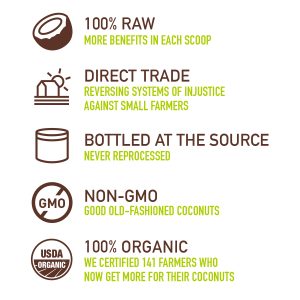In a world where the buzz around sustainable living and green eating is often associated with premium products and specialty stores, the misconception that adopting a green eating lifestyle is expensive prevails. However, the reality is quite the opposite. A green eating lifestyle can indeed be budget-friendly and accessible to all. By focusing on mindful choices, smart shopping, and embracing the abundance of affordable, nutritious options, individuals can cultivate a green eating approach that aligns with both environmental sustainability and economic feasibility. In this article, we explore various ways in which a green eating lifestyle can be both affordable and accessible to people from all walks of life.
1. Embrace Seasonal and Local Produce:
Choosing seasonal and local produce is a cornerstone of a budget-friendly green eating lifestyle. Seasonal fruits and vegetables are not only fresher and tastier but also more affordable due to their abundance. Local produce, often found at farmers’ markets or community-supported agriculture (CSA) programs, tends to be competitively priced compared to imported or out-of-season options. By aligning your choices with what’s in season and grown nearby, you support local farmers and reduce the environmental impact associated with long-distance transportation.
2. Plan Meals and Reduce Food Waste:
Planning meals in advance is a powerful strategy to make green eating budget-friendly. It helps you create a shopping list based on what you need, reducing the likelihood of impulse purchases and food waste. By carefully planning meals, you can also maximize the use of ingredients, repurpose leftovers, and reduce the overall quantity of food you buy. This not only saves money but also aligns with sustainable practices by minimizing the environmental impact of food waste.
3. Buy in Bulk and Opt for Whole Foods:
Buying in bulk is a cost-effective way to stock up on staples such as grains, legumes, nuts, and seeds. Many health food stores and bulk sections in supermarkets offer these items at a lower price per unit. Opting for whole foods, such as brown rice instead of processed rice products, is not only healthier but also more budget-friendly. Whole foods often provide more nutritional value and can be more versatile in the kitchen, allowing you to create a variety of meals without breaking the bank.
4. Explore Affordable Plant-Based Proteins:
Protein sources are a crucial component of a green eating lifestyle, and fortunately, there are numerous affordable plant-based options available. Beans, lentils, chickpeas, and tofu are excellent sources of protein that are often more budget-friendly than animal-based counterparts. Incorporating these affordable plant-based proteins into your diet not only supports green eating but also contributes to overall cost savings.
5. Grow Your Own Food:
For those with access to outdoor space, growing your own food can be an incredibly budget-friendly and rewarding aspect of a green eating lifestyle. Herbs, fruits, and vegetables can be cultivated at home, reducing the need to purchase these items regularly. Container gardening or community garden initiatives provide accessible options for individuals without large yards. Growing your own food not only saves money but also fosters a deeper connection to the food you consume.
6. Utilize Frozen and Canned Options:
Frozen and canned fruits and vegetables are often more affordable than their fresh counterparts and have a longer shelf life. These options are convenient, retain much of their nutritional value, and can be a great way to incorporate a variety of produce into your diet, especially when certain items are out of season. Opt for products with minimal additives and check for sales and discounts to maximize savings.
7. Explore Local Discount Stores and Farmers’ Markets:
Discount stores, local markets, and farmers’ markets can be treasure troves for budget-friendly green eating. Many local markets offer affordable, fresh produce, and some even have discounted sections for slightly imperfect but still perfectly edible fruits and vegetables. Discount stores often carry organic and natural products at more competitive prices than larger chain stores, making it easier for individuals on a budget to access healthier, sustainable options.
8. Minimize Processed and Convenience Foods:
Processed and convenience foods tend to be more expensive and often come with additional packaging. By minimizing your reliance on these items, you not only save money but also reduce your environmental impact. Cooking simple meals from scratch using whole ingredients allows you to control portion sizes, reduce unnecessary additives, and make your green eating lifestyle more affordable.
9. Opt for Inexpensive Superfoods:
While some superfoods can be expensive, many nutrient-dense options are quite affordable. Foods like oats, brown rice, bananas, sweet potatoes, and leafy greens pack a nutritional punch without breaking the bank. Incorporating these affordable superfoods into your meals ensures that you’re receiving essential vitamins and minerals without straining your budget.
10. Buy Generic and Store Brands:
Opting for generic or store brands instead of name brands can significantly reduce your grocery bill. Many generic brands offer organic and natural options at more affordable prices. Check ingredient lists and compare nutritional information to ensure that you’re making choices that align with your green eating goals. This simple switch can make a noticeable difference in your overall food expenses.
11. Educate Yourself on Nutrition Labels:
Being knowledgeable about nutrition labels can help you make informed and budget-friendly choices. Understanding the difference between marketing claims and actual nutritional content enables you to prioritize nutrient-dense options. By focusing on foods that provide essential vitamins, minerals, and fiber, you can create a balanced and affordable green eating plan.
12. Participate in Community Food Initiatives:
Community initiatives, such as food co-ops, community gardens, and shared resources, can provide affordable access to fresh, local produce. Joining a food co-op allows you to collectively purchase items in bulk, often at lower prices. Community gardens offer a space to grow your own food, and shared resources create opportunities for individuals to support each other in adopting a green eating lifestyle.
13. Make Smart Choices in the Protein Aisle:
When incorporating animal proteins into your diet, making cost-effective choices is key. Opt for less expensive cuts of meat, explore options like eggs and canned fish, and consider plant-based protein sources to diversify your diet without overspending. Balancing your protein choices with more affordable options ensures that your green eating lifestyle remains budget-friendly.
14. Educate Yourself on Affordable Cooking Techniques:
Learning budget-friendly cooking techniques allows you to maximize the value of your ingredients. Batch cooking, meal prepping, and making use of leftovers are strategies that help you stretch your food budget. Investing time in learning how to prepare cost-effective and nutritious meals empowers you to embrace a green eating lifestyle without straining your finances.
15. Advocate for Affordable Green Choices:
Engage with your local community, policymakers, and businesses to advocate for more affordable green choices. Encourage the availability of budget-friendly organic and sustainable options in local stores. Support initiatives that promote access to affordable, healthy food for all community members. By actively participating in advocacy efforts, you contribute to making green eating more accessible to a broader audience.
In conclusion, a green eating lifestyle can indeed be budget-friendly and accessible to all. By making informed choices, embracing affordable options, and prioritizing mindful consumption, individuals can navigate the intersection of sustainability and affordability. The key is to recognize the diverse array of affordable, nutritious foods available and to approach green eating with a mindset that values both environmental consciousness and economic feasibility. With the right knowledge and strategies, anyone can cultivate a green eating lifestyle that nourishes both their well-being and the planet.

















